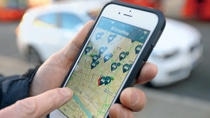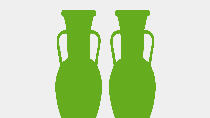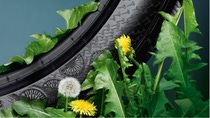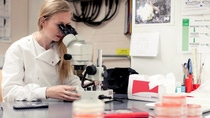Who we are
Circular economy: A visionary roadmap?
In a world of limited resources, new economic models are needed. The circular economy is an idea that is gaining ground. What does it mean and how does it work?

Globally, we are facing the pressures of climate change, population growth and limited resources. The bioeconomy is part of a larger, holistic concept: the circular economy, which aims to transform the way we live so that we do not exceed our planet’s boundaries.
The fundamental idea is to decouple growth from resource depletion by developing innovative business models. Moving away from the linear “take-make-dispose” to a more circular approach in production and consumption could be the biggest economic transformation since the industrial revolution. “The linear model, which has been very successful in delivering economic growth in the past, is no longer viable for continuing progress,” says Jennifer Gerholdt, Senior Director of the Environment Program at the U. S. Chamber of Commerce Foundation Corporate Citizenship Center. She sees businesses embracing the circular economy approach as an opportunity to drive innovation within the broad sustainability framework.
The aim of the circular economy is to use fewer resources by efficient processes, waste prevention, re-use, repair, remanufacture and recycling. It focuses primarily on material cycles and relies on energy from renewable sources. Design for durability ensures that technical products last as long as required, are easily maintained and have high second-hand value. Design for disassembly means that the products and their components can be repaired, remanufactured and recovered as raw material for another manufacturing process.
Through “industrial symbiosis,” by-products from one industrial process become the feedstock for another. BASF has incorporated this idea from its very beginning in 1865. “The BASF Verbund is designed for efficient use of energy and resources. The excess heat produced in one production facility can be re-used as energy in other plants. Offgas or reaction by-products from one plant work as raw material for another. It means we are able to reduce emissions and waste, while conserving resources,” says Uwe Liebelt, PhD, President, European Site and Verbund Management at BASF.
Another pillar of the circular economy concept is growing fast: the new “service economy,” where sharing and leasing replaces ownership and consumers become users. For example, the shift from individual ownership to car sharing will lead to more intense usage over the car’s service life, requiring new, highly durable and recyclable materials and technologies. Chemical innovations are essential for achieving this.
The Ellen MacArthur Foundation, which aims to support and accelerate the transition to the circular economy, estimates that these ideas could save at least $1 trillion in materials annually by 2025 and create jobs through remanufacturing and recycling products. The strategic potential of the circular economy to use as few resources as possible while supporting growth means that it is being rapidly incorporated by some of the world’s leading companies and regional economies. For Gerholdt, this way of doing business is, simply, the “new normal” in the 21st century.
Innovative circular economy initiatives are taking root around the world. From pineapple leather and recycled cigarette butts, to clothes leasing and long distance carpooling – find out what businesses and organizations in different countries are doing.
Just click on the hotspots in the world map to see the details.
Closing the loop – circular economy thinking from past to present











